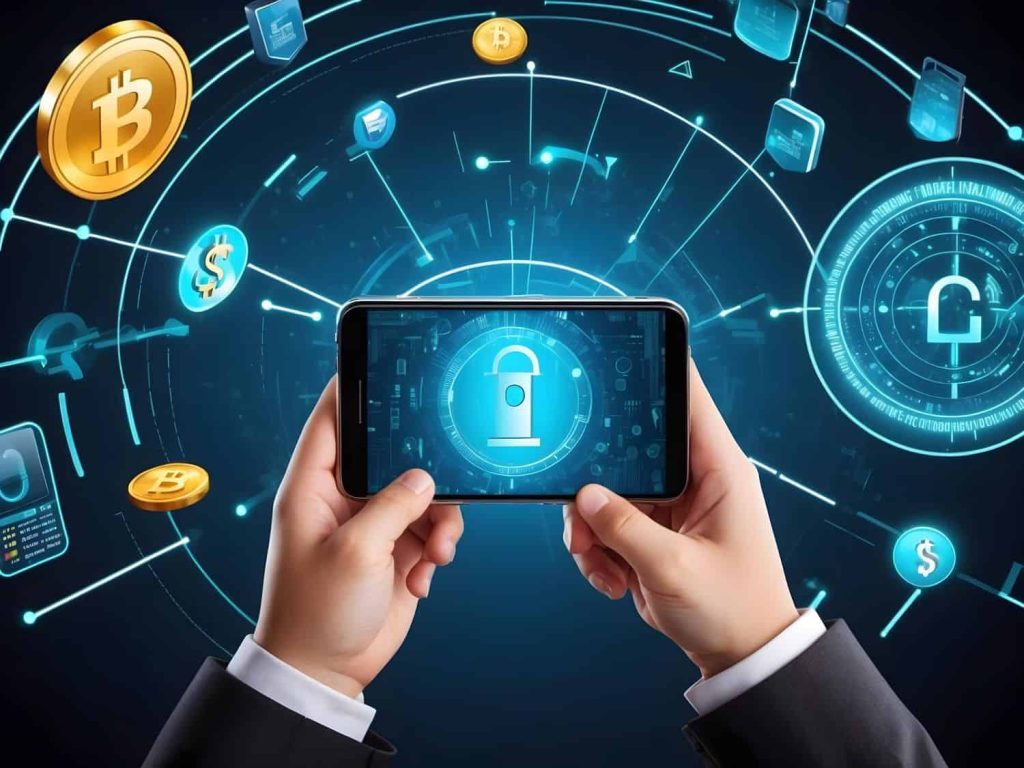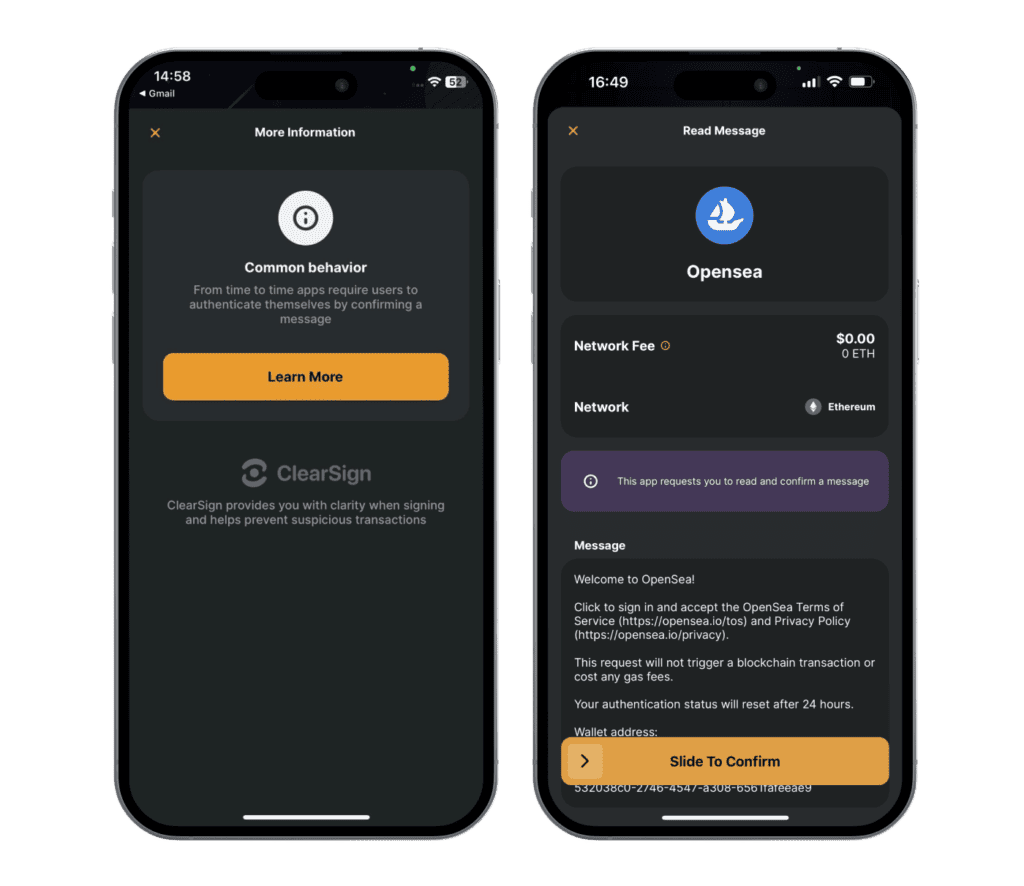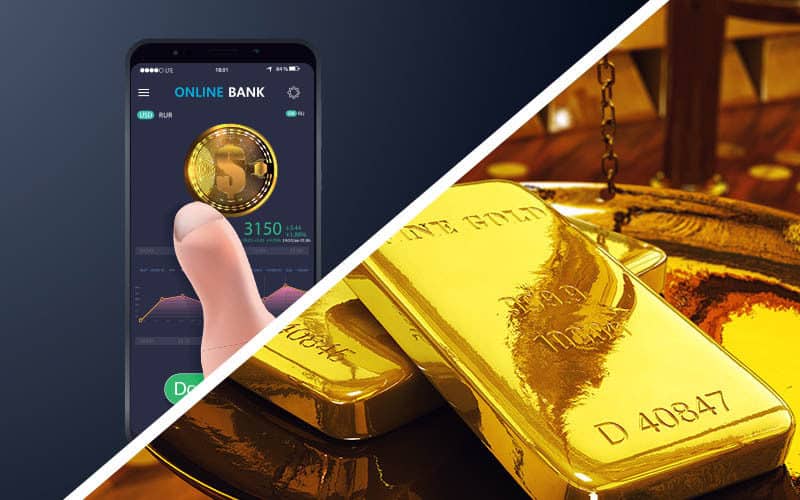Picture this: your mobile holds a vault of digital gold. It’s not a game; it’s your crypto wallet, the keeper of your digital dollars. But is it safe? Crooks and hackers drool over such treasure troves, and the only thing standing between them and your crypto riches is the security of your mobile wallet. My mission?
To turn your wallet into Fort Knox for your digital coins. In this guide, I’ll lead you through understanding wallet security basics, setting up iron-clad defenses, and staying sharp against sneaky threats. You don’t need a guard dog or a moat; just smart moves to keep your crypto safe and sound. Ready to be the hero of your own crypto saga? Let’s get started and fortify your digital vault!
Understanding the Essentials of Mobile Crypto Wallet Security
The Importance of High-Level Encryption and Authentication
Your mobile crypto wallet is a treasure trove. It needs strong locks to keep it safe. That’s where encryption and authentication come in. Encryption scrambles your data, making it hard to read without a special key. Authentication makes sure it’s really you trying to open the wallet. These two are like a secret handshake for your mobile wallet.

To keep your mobile wallet safe, use tough-to-crack codes and keys. Think of them as secret passwords that only you know. Passcodes, fingerprint scans, and face IDs are your first defense. They stop thieves from getting in. For even better protection, add another layer. You can get a code on your phone or use an app. This is called 2-factor authentication, or 2FA for short.
Always pick a strong passcode. Try not to use easy ones like “1234” or “0000.” Those are too simple to guess. Instead, create a mix of numbers, letters, and symbols. The more random, the better. It’s like a puzzle that’s very hard to solve. And keep this passcode a secret. Don’t share it with anyone.
Identifying and Mitigating Mobile Wallet Vulnerabilities
Now, let’s talk about the weak spots in mobile wallets and how to fix them. If you know where a wallet is weak, you can make it stronger. Think of it as checking the walls and doors to your house for gaps where a thief could sneak in. Then, you fix those spots so no one can get through.
One weak spot is the software itself. It needs to stay up to date. Updates often have fixes for security holes. So, when your wallet app says there’s an update, don’t wait. Update it right away. It’s like adding new locks to your doors.
Another risk is malware. That’s a kind of bad software that can steal your info. Be careful what you click on or download. Some links or apps might be traps. They look harmless, but they’re not. It’s like when someone friendly knocks at your door, but they’re really a trickster.
One more thing: Be careful of fake websites and messages. These can trick you into giving away your keys. Always double-check the links and messages you get. When in doubt, don’t click. It’s better to be safe than sorry.
To sum up, think of your mobile crypto wallet as your digital home. Put strong locks on it. Check for security holes and fix them. Stay away from strangers. And always be on guard. This way, you’ll keep your digital treasure trove safe and sound.
Advanced Protection Strategies for Your Mobile Wallet
Implementing Multi-Factor and Biometric Verification
Keep your mobile crypto wallet safe. Use more than one check to log in. This is called multi-factor verification. It’s like having a special handshake that only you know. Add a fingerprint or face scan, called biometric security, and it’s even better. No one else has your face or fingerprint, right? This makes your wallet tough for hackers to break into.
Imagine your wallet as a treasure box. To open it, you need a key, which is your password. But, what if someone steals the key? With multi-factor, you need a password and another secret, like a code from your phone. If you add biometrics, it’s like needing your face or thumbprint too. It’s like having a guard who knows only you can enter. This keeps your treasure—your money—safe from thieves.
People sometimes ask, “What if I lose my phone? Can I still get my money?” Yes, you can! That’s because of backup codes, or other ways to prove it’s you. It’s smart to set those up just in case. Remember, it’s about keeping your money safe but also making sure you can get it.
Managing Private Keys and Backup Procedures
Your private keys are like secret codes that lock up your money. You must keep them safe. Write them down and store them where only you can find them. Never share your secret with anyone. Think of it like hiding a map to your hidden treasure.

What if you forget where you put your keys? Or what happens if your phone breaks? Have a backup plan. Write down your key and keep it somewhere safe, like a locked box. Or use a hardware wallet. This is like having a spare key for your treasure chest.
A hardware wallet is a small device that holds your secret keys safely. It’s like a safe deposit box for your digital money. This is great for “cold storage,” which means keeping your money offline, away from hackers.
If someone tries to steal your money, they can’t get far without your keys. So, having secret codes and keeping them safe is super important. You’re like the captain of a ship, and your keys are your map to the treasure. Keep them safe, and your treasure is safe too.
Always check your wallet app for any updates. People who make the wallet apps find new ways to keep it safe. They fix any security holes. By updating, you make sure you have the strongest protection. It’s like adding stronger locks to your treasure box.
Remember, the world of mobile crypto wallet security moves fast. Hackers are always trying to find new ways to steal your treasure. Keep a close eye on your wallet. Use strong passwords, and don’t forget to update. Take these steps, and you’ll be a pro at guarding your digital gold.
Staying Ahead of Threats: Regular Security Practices
The Role of Regular Updates in Crypto Wallet Security
Mobile crypto wallet security shines with regular updates in the spotlight. Yes, updates do more than fix bugs or add new features. They strengthen your crypto wallet’s overall protection, tackling security vulnerabilities and deterring potential threats. Securing cryptocurrency involves being aware of these regular updates, ensuring your encrypted crypto wallet keeps pace with ever-evolving cyber threats.
But why are these updates so crucial? Well, they patch any exposed crypto wallet vulnerabilities. Remember, your mobile wallet protection comes down to a proactive approach. Keep an eye out for updates and apply them as soon as possible. Your efforts will boost the strength of your mobile crypto security, making your digital treasure trove more robust.
Educating Users on Phishing and Malware Defense Techniques
Ah, phishing and malware! These two words strike terror into the hearts of crypto enthusiasts. But here’s some good news: understanding them is half the battle! Equipping users with the knowledge to identify and combat phishing and malware attacks is critical for safeguarding your mobile crypto wallet.

Phishing is a tactic used by hackers to trick you into revealing sensitive information, like your secure pin codes or private key security details. So how do you spot it? Hmm, always scrutinize your emails and messages. Look out for senders posing as reputable service providers and remember: Never share your secure key storage details or passcodes.
Malware, on the other hand, poses a different threat. It’s designed to disrupt and gain unauthorized access to your system, putting your mobile crypto wallet defense at risk. How to combat this? Use reliable malware protection tools and never download apps or content from untrustworthy sources.
In essence, staying ahead of threats is all about regular security practices. From ensuring your crypto wallet encryption is always up-to-date, to not falling prey to phishing scams or malware attacks. Let’s make mobile crypto wallet security more than just heavy words. Let it be our shield in the exciting, yet wild world of cryptocurrency. And remember, only you can fortify your digital treasure trove.
Evaluating and Enhancing Mobile Crypto Wallet Defenses
Conducting Security Audits and Risk Analysis
Keeping your crypto safe starts with checking your wallet’s strength. Like seeing if a fort can handle an attack, security audits test your mobile wallet. They highlight any weak spots where hackers could break in. This process is something you should do often. It can catch threats before they turn into thefts.
How do you conduct a security audit? First, assess all entry points. This includes passcodes, 2-factor authentication setups, and biometric security measures. Check if they’re tough enough to fend off unwanted guests. A strong passcode has numbers, letters, both upper and lower case, and symbols. Change it from time to time and never use easy guesses like birthdays.
Next, look at how you store and manage your keys. Your private key is like your secret treasure map. If someone else finds it, they can take your treasure. Make sure your keys are stored safely and never shared. An encrypted crypto wallet helps here. It scrambles your key into a code that only you can unlock.
Lastly, think about what you’d do if your mobile device got lost or hacked. Do you have a backup plan? Backing up your wallet means making a copy of your keys and storing them somewhere safe. If your phone takes a swim, you won’t have to say bye to your crypto too.
Integrating Hardware Wallets for Cold Storage and Extra Security
When it comes to top-notch security, cold storage is key. It means keeping your crypto offline where no hacker can reach it. A hardware wallet does this. It’s like a safe deposit box for your digital coins. It keeps your crypto locked until you say it’s time to trade or spend.
Why use a hardware wallet? Simple. It’s one of the safest places for your crypto. Unlike your phone, a hardware wallet isn’t always on and connected. That means it’s much harder for thieves to attack. It’s extra security that’s worth considering, especially if you hold a lot of crypto.
You can also level up your mobile wallet defense with a hardware wallet. They often need you to press a button on the device to confirm a transaction. This means that even if a hacker has your phone, they can’t move your crypto without the device in their hand. It’s an extra step, but it could save your wealth.
To wrap up, keeping your crypto coins safe is a bit like being a treasure hunter. You’ve got to think smart and be ready for challenges. Regular checks, tough security features, and using both your phone and a hardware wallet are your best tools. Keep these tips in your back pocket, and you’ll be set to stand guard over your digital treasure trove.
We’ve covered key actions you need to keep your mobile crypto wallet safe. Start with strong encryption and two-step checks. Know the risks wallets face. Then, step up your game with added security measures like biometric checks and a solid backup plan. Never ignore updates; they fix holes that hackers love. Learn how scams and bad software work to stay clear.
Last, regular check-ups on your wallet’s defenses can catch weak spots. Consider a hardware wallet too for even more safety. This stuff matters. It’s your money; it’s your future. Protect it like a pro, and you can trust your mobile crypto wallet to stand strong against threats. Keep these tips close, and you’ll be ahead in the crypto safety game. Follow Crypto Currency Bitcoin Price to update more knowledge about Crypto.
Q&A :
1. What is Mobile Crypto Wallet Security?
Mobile crypto wallet security refers to the measures and protocols put in place to protect digital wallets from potential hacks or unauthorized access. These digital wallets hold cryptographic keys that are used to engage in transactions within Blockchain technology. Ensuring the security of these mobile crypto wallets is essential as they hold valuable digital assets, like Bitcoin, Ethereum, and other cryptocurrencies.
2. How can I secure my Mobile Crypto Wallet?
To secure your mobile crypto wallet, you can use a variety of approaches. This includes utilizing strong and unique passwords, enabling two-factor authentication (2FA), and keeping your wallet’s software up-to-date. In addition, some people choose to use hardware wallets, which are offline devices and provide increased security.
3. What are the risks associated with Mobile Crypto Wallets?
The risks associated with mobile crypto wallets primarily revolve around potential security breaches. This could result in the loss of your cryptographic keys and, ultimately, your digital assets. Mobile wallets can be vulnerable to malware, phishing attacks, or even physical theft of the device. Moreover, if you forget your wallet’s password or lose your backup phrases, you might lose access to your assets.
4. Is a Mobile Crypto Wallet more secure than a Desktop Wallet?
The security between mobile and desktop wallets varies and depends on several factors such as the security measures the user has put in place, the wallet provider, and the device’s vulnerability to threats. However, both types of wallets present their own unique security risks, and it’s up to the user to put in place measures to mitigate these risks.
5. What is the most secure Mobile Crypto Wallet?
The security level of mobile crypto wallets tends to vary depending on the vendor’s features and user practices. Some of the most secure mobile wallets according to user reviews include Ledger, Trezor, and Trust Wallet. These wallets offer features such as pin codes, two-factor authentication, and recovery phrases. Yet, no matter the wallet chosen, the user has a role in ensuring their wallet remains secure by following security best practices.
